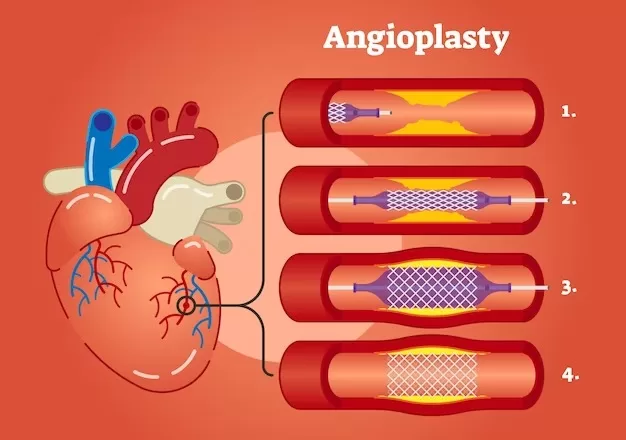Angioplasty is a technique that treats heart problems. Heart specialists have the expertise to perform it. Stents are used to tackle blockages. Stents have revolutionized heart disease.
A stent happens to be a metal or plastic tube inserted into a blocked passageway to keep it open. Since their introduction in the late 1980s, stents have indeed revolutionized the treatment of coronary artery disease and other diseases in which vital vessels or passageways are rather obstructed. Angioplasty is way out now for heart-related issues.
The practice of using stents has become fairly common and has allowed for the minimally invasive treatment of conditions that did require surgery. Even so, there happen to be complications associated with stent procedures, and may not be the best option for everyone.
There are three main types of stents used in Angioplasty procedures:
- Bare-metal stents (BMS)
- Drug-eluting Stents (DES)
- Bioabsorbable stents.
Bare-metal stents are rather made of metal and are also used to prop open one’s artery after an angioplasty procedure. They are typically used in patients who are to take blood-thinning medications, like aspirin or clopidogrel. Drug-eluting stents are coated with medications that help prevent the artery from becoming blocked again. Bioresorbable stents are of course designed to dissolve over time, thus leaving behind only the natural artery.

Types
The initial stent was implanted into a patient’s heart in Toulouse, France, in 1986. Since then, stents have rather been made used of in other organs, including the kidneys, colon, as well as esophagus. Recent innovations have even allowed for the use of stents in treating certain types of glaucoma.
There are sorts of stents that are used to treat different medical conditions. These include:

- Coronary stents: This is used for actually treating coronary artery disease, and these stents are of course used as part of a procedure referred as angioplasty. Today, the vast majority of angioplasties that does involve a coronary stent.
- Endovascular stents: These stents are meant to be used to treat advanced peripheral artery disease (involving arteries other than the heart), cerebrovascular disease (involving the brain), and renal artery stenosis (involving the kidneys).
- Ureteral stents: This is made use of to treat or even in fact prevent the obstruction of urine from the kidneys, and such stents are placed inside a ureter (the vessel that connects a kidney to the bladder) and can be as long as 11 inches in length.
- Prostatic stents: This is made used to enable urination in males with an enlarged prostate, these stents overcome obstructions that are caused when the prostate gland compresses one’s urethra (the passage via which urine exits the body).
- Colonic stents: These are made use of to treat bowel obstructions, as these stents are quite often made use of in people with advanced colon cancer or other causes of bowel blockage.
- Esophageal stents: These are quite often used in people with advanced esophageal cancer, these stents keep the esophagus (feeding tube) open so that the person can swallow soft foods as well as liquids.
- Pancreatic and also biliary stents: Made use of to drain bile from the gallbladder as well as pancreas to the small intestine, these stents are indeed often used when a gallstone blocks a bile duct and triggers a potentially life-threatening condition referred to as cholangitis.
- Micro-bypass stents: Being a recent innovation used in people with mild to moderate open-angle glaucoma, these stents are implanted by a micro-surgeon to reduce intraocular pressure (pressure within the eye) and slow disease progression.
Conclusion
Thus there are different stents designed for different parts of the body. The goal of all these respective stents is to keep a passageway open to restore normal flow as well as function. Angioplasty is done by heart specialists.
